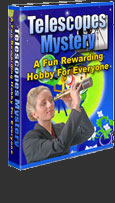
 |
Download FREE "Mystery of Telescopes" Ebook Now! - What do you really want to do with your telescope?
Just type in your name and email address below and we'll send you the ebook instantly |
Hubble Telescope – Contribution in Photographs of the Galaxies
Of the many reasons the prime reason for launching
the Hubble’s Telescope into outer space was because scientists
& researchers wanted bigger and better photographs of galaxies that
were unknown to humans earlier.
Since its beginning in 1946, astronomers all across the globe were head over heals with the thought that they would be able to see photographs of unknown galaxies through the telescope of Hubble’s get to know what was hidden from them before that time.
And since then onwards most of the pictures have revealed more than that what they ever thought could be out there.
In a couple of days of its settling into orbit the Hubble’s telescope started its operations and began clicking pictures in various directions and then when they began to clicking these picture in interest area the pictures that it sent back to the base made all sit up in surprise and awe.
It was commonly known then that there could be many, many galaxies there
in outer space but when the Hubble started sending reports what information
came in left all aghast, it was something that never even crossed their
minds.
Let’s start by understanding what a galaxy
is? To put it in simple words, it’s a system that consists of some
hundred billion stars. The Sun we have is a part of a galaxy called -
Milky Way Galaxy.
Now we know that there exist galaxies in the billions
that are currently under observation. When these galaxies were created
& how is a matter that is being extensive examined by astronomers.
In this situation the Hubble’s Telescope is the most potent.
The researchers at NASA began by positioning this mighty telescope in
areas that had no previous records that they had been explored.
On a fresh galaxy being identified, the researchers would just have to
press a button at their disposal and the telescope would click a hundred
or more times to capture the images then send it back to the NASA base
on earth. These images would then be paid full attention by such researchers.
It was commonly known then that there could be many, many galaxies there
in outer space in addition to the Milky Way Galaxy, after the sending
of the Hubble’s Telescope and subsequently the pictures that were
sent back just added a whole new dimension to what was then going on in
the astronomy fraternity.
One of the more better effects it had on humans that thereafter people
related or not related to astronomy just started buying
telescopes and started stargazing during the nights just to have a
feel of what this phenomenon called Hubble’s was doing about.
Even if you happen to be an amateur astronomer, keeping at it and keep
gazing when ever you’d like to. Who knows that you might chance
upon a new celestial body and have it name by you or after you, it would
be an exciting prospect surely.
Hubble was designed to do a particular job, the job of clicking photographs
and mind you it just did not succeed, it succeeded so well that there
is nothing that comes close to it when we speak in terms of astronomy
picture capturing.